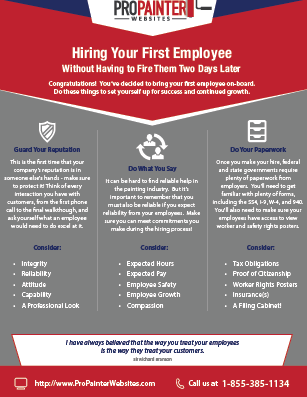Find Out Just How Seasonal Factors Influence Business Exterior Painting Success And Find The Very Best Times To Guarantee Lasting Results For Your Task
Find Out Just How Seasonal Factors Influence Business Exterior Painting Success And Find The Very Best Times To Guarantee Lasting Results For Your Task
Blog Article
Produced By-Ford Skafte
When you're planning a business exterior painting project, seasonal elements can make or break your outcomes. You'll intend to take into consideration just how temperature level and moisture impact paint application and drying out times. Selecting the best season can ensure your paint sticks properly and lasts much longer. But which painting retail are really the most effective for this kind of work? Let's discover the key elements that can impact your project's success.
The Influence of Temperature on Paint Application
When you're preparing an industrial exterior painting job, the temperature can dramatically influence how well the paint sticks and dries out.
Preferably, you wish to repaint when temperatures vary between 50 ° F and 85 ° F. If it's too chilly, the paint might not heal correctly, leading to issues like peeling off or breaking.
On the other hand, if it's as well hot, the paint can dry out also quickly, protecting against appropriate bond and leading to an unequal surface.
You must also consider the moment of day; early morning or late afternoon uses cooler temperature levels, which can be more positive.
Constantly check the maker's suggestions for the details paint you're using, as they often offer advice on the excellent temperature array for optimal outcomes.
Humidity and Its Effect on Drying Times
Temperature level isn't the only environmental factor that affects your business exterior painting job; humidity plays a substantial function also. High humidity degrees can slow down drying times significantly, influencing the general high quality of your paint task.
When the air is filled with dampness, the paint takes longer to treat, which can result in problems like bad bond and a greater risk of mildew growth. If you're painting on a specifically damp day, be gotten ready for prolonged delay times between coats.
It's essential to check regional climate condition and strategy appropriately. Ideally, go for humidity degrees between 40% and 70% for ideal drying out.
Keeping these factors in mind guarantees your task stays on track and supplies an enduring finish.
Best Seasons for Commercial Outside Painting Projects
What's the best time of year for your industrial external paint tasks?
Spring and early fall are generally your best choices. During these seasons, temperature levels are mild, and moisture levels are typically lower, creating excellent conditions for paint application and drying out.
Prevent summertime's intense heat, which can cause paint to completely dry too swiftly, causing bad bond and coating. Likewise, winter season's chilly temperature levels can impede correct drying out and curing, risking the longevity of your paint work.
Aim for days with temperature levels between 50 ° F and 85 ° F for ideal results. Remember to examine the local weather prediction for rain, as damp conditions can spoil your project.
Planning around these factors guarantees your paint job runs smoothly and lasts much longer.
Verdict
Finally, preparing your business external paint tasks around seasonal factors to consider can make a considerable difference in the outcome. By organizing work throughout the perfect temperature levels and moisture degrees, you'll guarantee better adhesion and drying out times. Remember to watch on https://www.coatingsworld.com/contents/view_online-exclusives/2021-09-15/15-home-painting-statistics-savvy-painters-need-to-know/ and pick the correct time of year-- spring and early autumn are your best choices. Taking these actions will certainly aid you accomplish a long lasting and professional surface that lasts.
